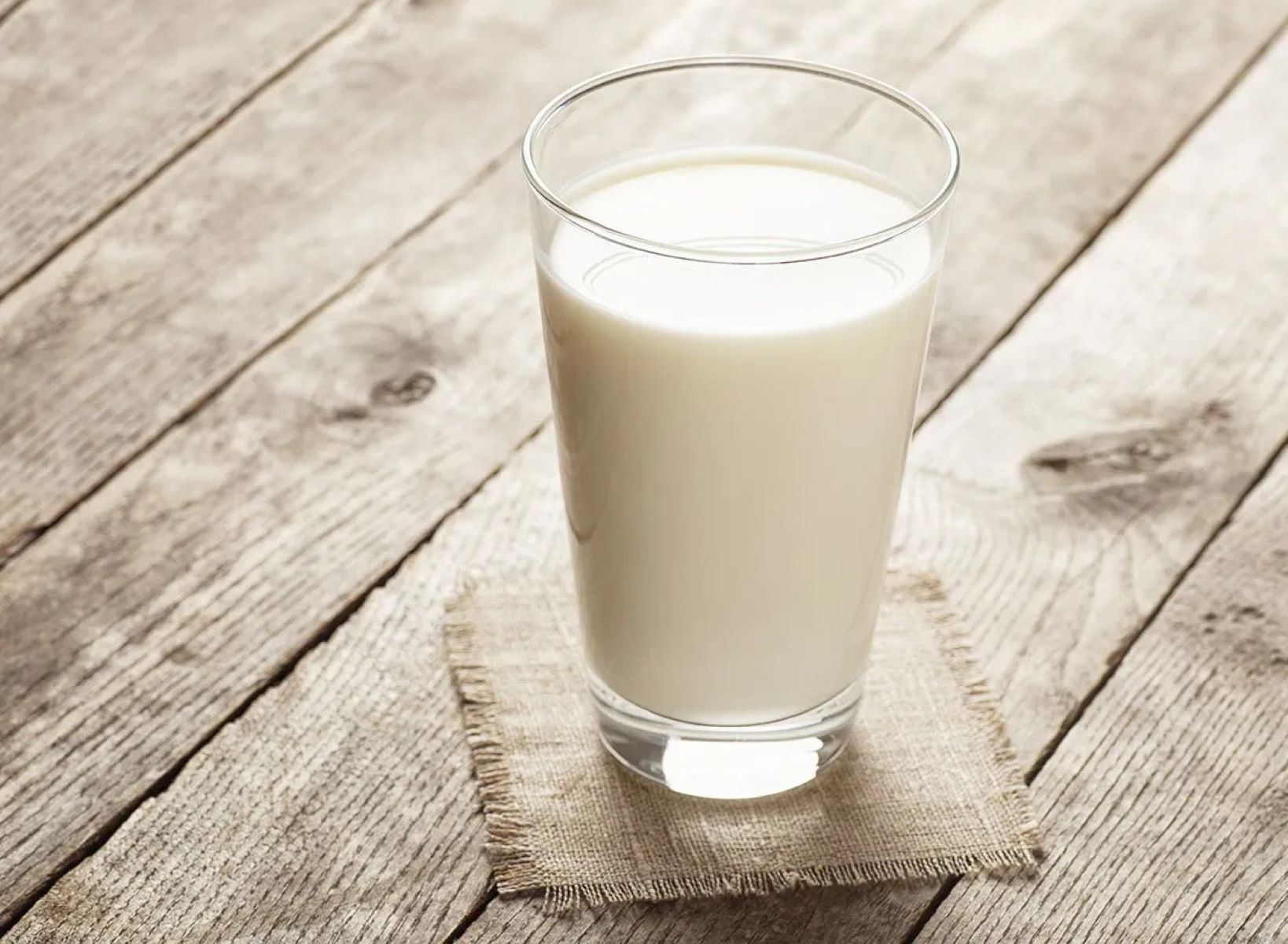Home>Furniture & Design>Interior Design Trends>How Many Calories Is A Glass Of Milk


Interior Design Trends
How Many Calories Is A Glass Of Milk
Published: February 3, 2024
Discover the latest interior design trends and learn how to incorporate them into your home. Stay updated with the top trends in interior design.
(Many of the links in this article redirect to a specific reviewed product. Your purchase of these products through affiliate links helps to generate commission for Storables.com, at no extra cost. Learn more)
Nutritional Content of Milk
Milk is a powerhouse of essential nutrients, making it a staple in many diets around the world. It is renowned for its rich nutritional profile, providing a wide array of vitamins, minerals, and macronutrients crucial for maintaining overall health. Let's delve into the impressive nutritional content of this beloved beverage.
Read more: How Many Calories In One Glass Of Milk
Macronutrients
Milk is a significant source of macronutrients, including carbohydrates, proteins, and fats. These macronutrients play pivotal roles in sustaining bodily functions and providing energy. A single cup of whole milk typically contains around 8 grams of fat, 12 grams of carbohydrates, and 8 grams of protein. The fat content varies depending on the type of milk, with whole milk containing the highest fat content, followed by reduced-fat and skim milk.
Vitamins and Minerals
Milk is also packed with essential vitamins and minerals vital for maintaining optimal health. It is particularly rich in calcium, which is crucial for bone health and overall skeletal strength. Additionally, milk contains significant amounts of vitamin D, which aids in the absorption of calcium and supports immune function. Other essential nutrients found in milk include vitamin A, vitamin B12, riboflavin, phosphorus, and potassium, all of which contribute to various physiological processes within the body.
Caloric Content
The caloric content of milk varies depending on its fat content. Whole milk, with its higher fat content, contains more calories compared to reduced-fat or skim milk. On average, a single cup of whole milk contains approximately 150 calories, while the same serving size of skim milk contains around 80 calories. This disparity in caloric content allows individuals to make informed choices based on their dietary preferences and nutritional needs.
Hydration and Electrolytes
In addition to its macronutrient and micronutrient content, milk also serves as an effective hydrating beverage. It contains a balanced combination of electrolytes, such as sodium and potassium, which aid in maintaining proper fluid balance within the body. This makes milk a valuable option for replenishing lost fluids and electrolytes, especially after physical activity or prolonged periods of exertion.
In summary, the nutritional content of milk underscores its status as a valuable dietary component. Its rich array of macronutrients, vitamins, and minerals makes it a versatile and nourishing beverage that can contribute significantly to overall health and well-being. Whether enjoyed on its own or incorporated into various culinary creations, milk stands as a nutritional powerhouse that continues to play a vital role in promoting optimal health.
Key Takeaways:
- Milk is packed with essential nutrients like calcium, vitamins, and protein. Different types of milk have varying calorie counts, so choose wisely based on your nutritional needs and preferences.
- The recommended daily intake of milk varies by age, supporting growth, bone health, and overall well-being. From infants to older adults, milk plays a crucial role in meeting essential nutritional needs.
Read more: How Many Calories Does A Glass Of Milk Have
Factors Affecting Caloric Content
The caloric content of milk is influenced by several key factors, each of which contributes to the overall nutritional profile of this dairy product. Understanding these factors is essential for making informed dietary choices and comprehending the varying caloric values of different types of milk.
1. Fat Content
The fat content of milk significantly impacts its caloric value. Whole milk, with its higher fat content, contains more calories per serving compared to reduced-fat or skim milk. This is due to the energy-dense nature of fats, which contribute to the overall caloric content of the milk. As a result, individuals seeking to manage their calorie intake may opt for reduced-fat or skim milk as lower-calorie alternatives.
2. Carbohydrates
Carbohydrates, particularly lactose, also contribute to the caloric content of milk. While not as energy-dense as fats, carbohydrates still provide a notable amount of calories. As such, the carbohydrate content of milk plays a role in determining its overall caloric value. Understanding the carbohydrate composition of different types of milk can aid individuals in aligning their dietary choices with their caloric needs.
3. Protein Content
Proteins, like fats and carbohydrates, contribute to the caloric content of milk. While proteins are not as calorie-dense as fats, they still provide a significant amount of energy. As such, the protein content of milk influences its overall caloric value. For individuals focusing on their protein intake, understanding the caloric contribution of milk's protein content is crucial for maintaining a balanced diet.
Read more: How Many Calories Is A Glass Of Whiskey
4. Fortification and Additives
Some types of milk may undergo fortification processes, where additional vitamins and minerals are added to enhance their nutritional value. While these fortifications do not directly impact the caloric content, they contribute to the overall nutritional profile of the milk. Additionally, flavored or sweetened milk products may contain added sugars or flavorings, which can increase the caloric content. Being mindful of these additives is essential when assessing the caloric value of different milk products.
By considering these factors, individuals can gain a comprehensive understanding of the elements that influence the caloric content of milk. This knowledge empowers them to make informed dietary choices that align with their nutritional goals and preferences. Whether aiming to manage calorie intake, optimize macronutrient consumption, or simply make conscious dietary decisions, recognizing the factors affecting the caloric content of milk is pivotal in promoting a balanced and health-conscious approach to nutrition.
Different Types of Milk and Their Caloric Values
When it comes to milk, there are various types available, each offering distinct nutritional compositions and caloric values. Understanding the differences between these milk varieties is essential for making informed dietary choices. Let's explore the caloric values of different types of milk and how they align with varying nutritional needs.
1. Whole Milk
Whole milk, known for its rich and creamy texture, contains a higher fat content compared to other types of milk. As a result, it boasts a higher caloric value. On average, a single cup of whole milk contains approximately 150 calories. While the fat content contributes to its caloric density, whole milk also provides essential nutrients, making it a valuable dietary option for individuals seeking a balance between caloric intake and nutritional benefits.
2. Reduced-Fat Milk
Reduced-fat milk, often labeled as 2% milk, undergoes a process to reduce its fat content while retaining a considerable portion of its nutritional value. A one-cup serving of reduced-fat milk typically contains around 120 calories, offering a lower-calorie alternative to whole milk without compromising significantly on taste and nutritional content. This makes it an appealing option for individuals aiming to moderate their calorie intake while still enjoying the benefits of dairy consumption.
Read more: How Many Calories Is A Glass Of Prosecco
3. Low-Fat Milk
Low-fat milk, commonly labeled as 1% milk, contains even less fat than reduced-fat milk, resulting in a lower caloric value. A single cup of low-fat milk generally provides approximately 100 calories, making it a suitable choice for individuals seeking to further reduce their calorie consumption while benefiting from the essential nutrients present in milk. Its balanced nutritional profile and lower caloric density make it a versatile option for various dietary preferences.
4. Skim Milk
Skim milk, also referred to as fat-free milk, contains minimal fat, resulting in the lowest caloric value among the different types of milk. A one-cup serving of skim milk typically contains around 80 calories, offering a significantly lower-calorie alternative to whole milk. Despite its reduced fat content, skim milk remains a rich source of essential nutrients, making it an ideal choice for individuals prioritizing low-calorie dairy options without sacrificing nutritional value.
5. Plant-Based Milk Alternatives
In addition to traditional dairy milk, there is a wide array of plant-based milk alternatives, such as almond milk, soy milk, and oat milk, available in the market. These alternatives cater to individuals with lactose intolerance, dietary restrictions, or specific lifestyle choices. The caloric values of these plant-based options vary depending on factors such as added sweeteners and fortifications. While they offer diverse flavor profiles and nutritional benefits, it's important to consider their caloric content when incorporating them into dietary plans.
By understanding the caloric values of different types of milk, individuals can make informed decisions based on their nutritional needs and preferences. Whether aiming to manage calorie intake, optimize macronutrient consumption, or accommodate dietary restrictions, the diverse range of milk options allows for flexibility in aligning with various health and wellness goals.
Recommended Daily Intake of Milk
Determining the recommended daily intake of milk involves considering various factors, including age, nutritional requirements, and overall dietary balance. The guidelines for milk consumption are established to ensure individuals receive adequate amounts of essential nutrients while maintaining a balanced diet. Let's explore the recommended daily intake of milk across different age groups and its significance in promoting overall health.
Read more: How Many Calories Is A Glass Of Riesling?
Infants and Toddlers
For infants, breast milk or infant formula is the primary source of nutrition during the first year of life. However, once infants transition to solid foods, whole milk can be introduced to support their growth and development. The American Academy of Pediatrics recommends that toddlers aged 1-2 years consume whole milk to facilitate the intake of essential fats and nutrients crucial for their cognitive and physical development.
Children and Adolescents
As children grow, their nutritional needs evolve, and milk continues to play a vital role in meeting these requirements. The recommended daily intake of milk for children and adolescents, aged 2-18 years, typically ranges from 2 to 3 servings. These servings can include milk, yogurt, or cheese, providing essential calcium, vitamin D, and protein necessary for bone health, muscle development, and overall growth.
Adults
While the emphasis on milk consumption may shift in adulthood, incorporating dairy products into the diet remains beneficial for meeting nutritional needs. The recommended daily intake of milk for adults aligns with broader dietary guidelines, emphasizing the consumption of low-fat or non-fat dairy options to support overall health. Incorporating milk into balanced meal plans can contribute to meeting calcium and vitamin D requirements, promoting bone health and reducing the risk of osteoporosis.
Older Adults
As individuals age, maintaining bone density and overall health becomes increasingly important. The recommended daily intake of milk for older adults focuses on ensuring adequate calcium and vitamin D intake to support bone strength and minimize the risk of fractures and osteoporosis. While individual dietary preferences and lactose tolerance may vary, incorporating alternative sources of calcium, such as fortified plant-based milk or supplements, can help older adults meet their nutritional needs.
In summary, the recommended daily intake of milk varies across different life stages, reflecting the evolving nutritional requirements of individuals. By adhering to these guidelines and incorporating milk into a balanced diet, individuals can benefit from its essential nutrients, supporting overall health and well-being throughout various stages of life. Whether consumed as a standalone beverage, added to recipes, or enjoyed in dairy-based products, milk remains a valuable component of a nutritious diet, contributing to the fulfillment of essential nutritional needs.
Frequently Asked Questions about How Many Calories Is A Glass Of Milk
Was this page helpful?
At Storables.com, we guarantee accurate and reliable information. Our content, validated by Expert Board Contributors, is crafted following stringent Editorial Policies. We're committed to providing you with well-researched, expert-backed insights for all your informational needs.












0 thoughts on “How Many Calories Is A Glass Of Milk”